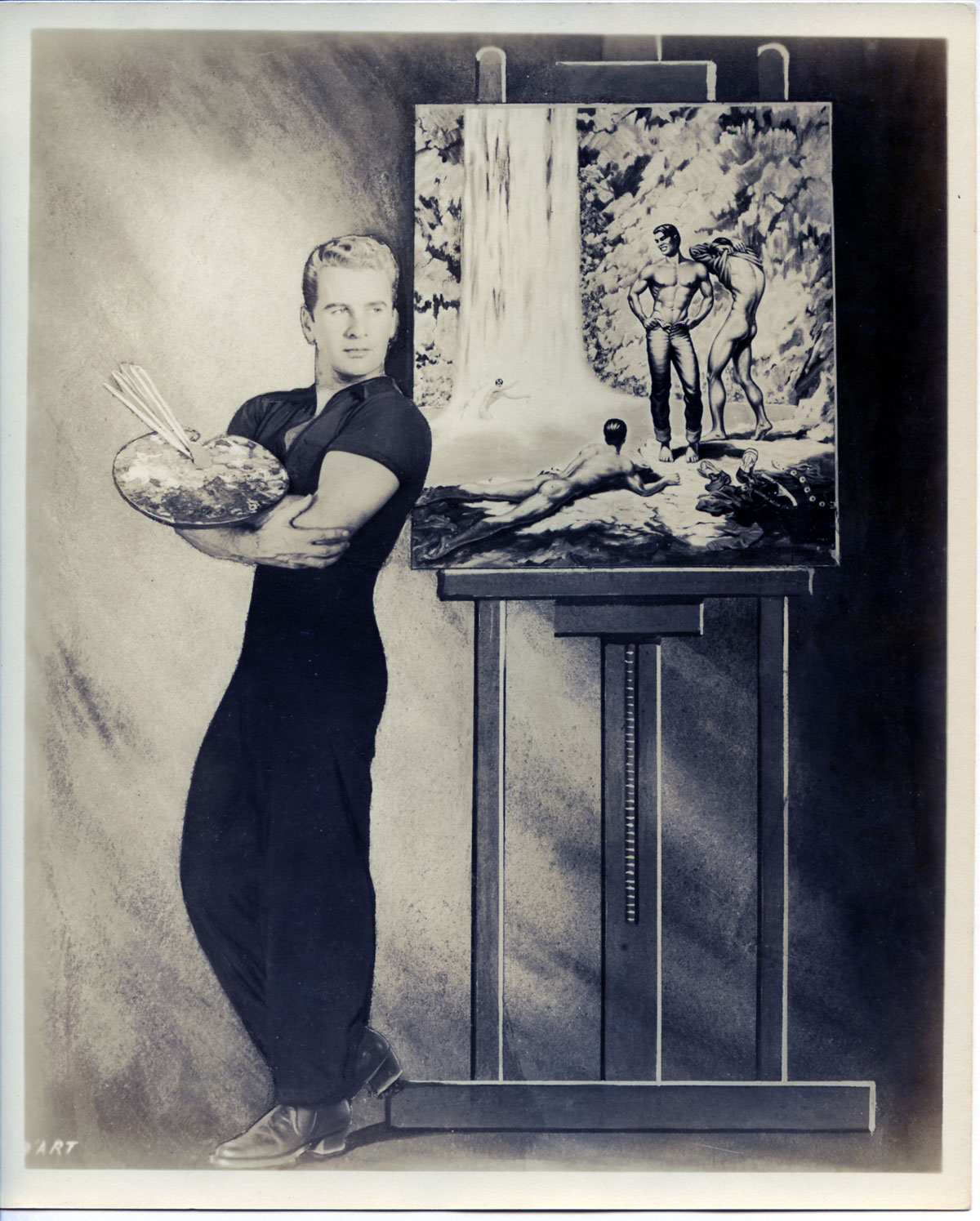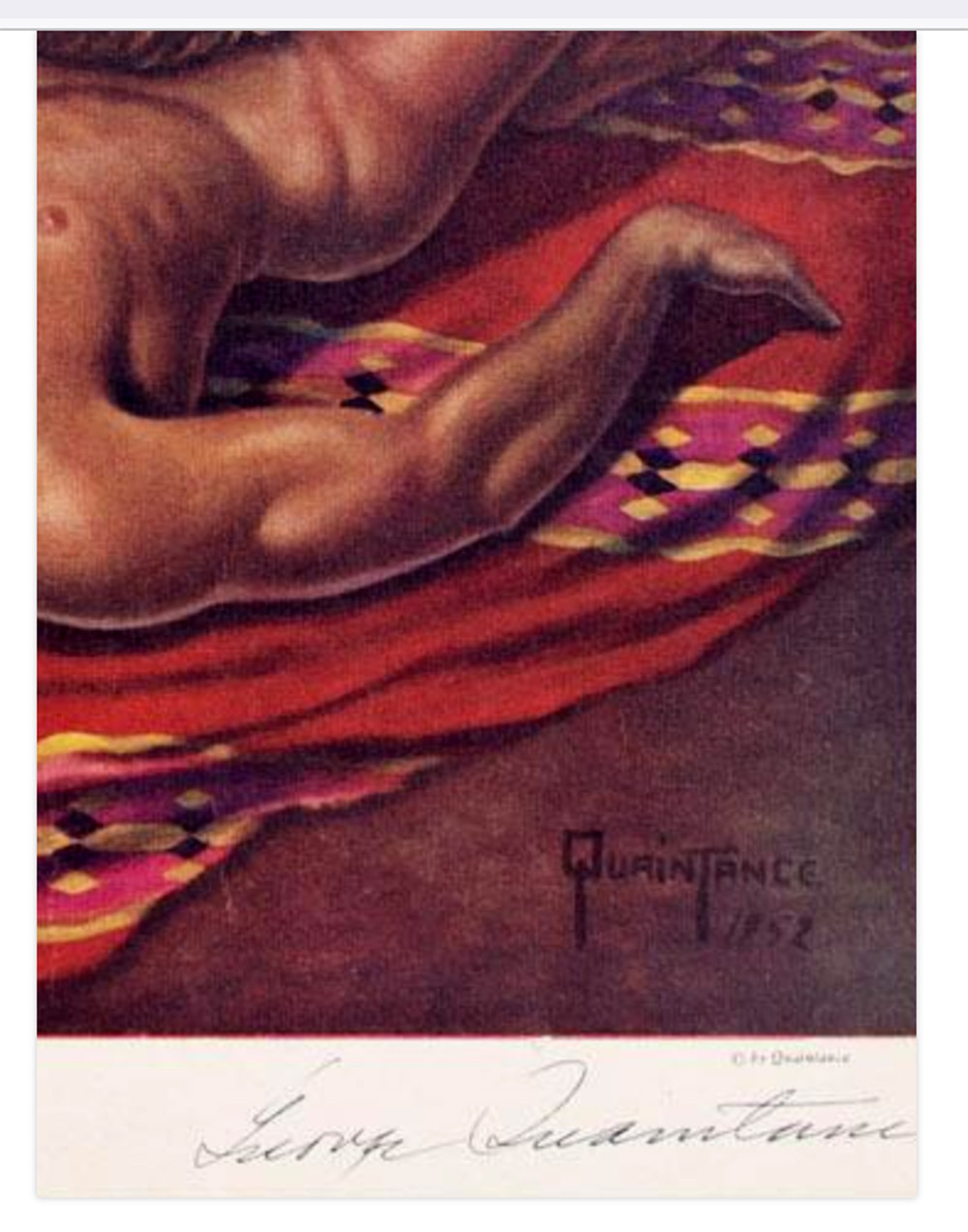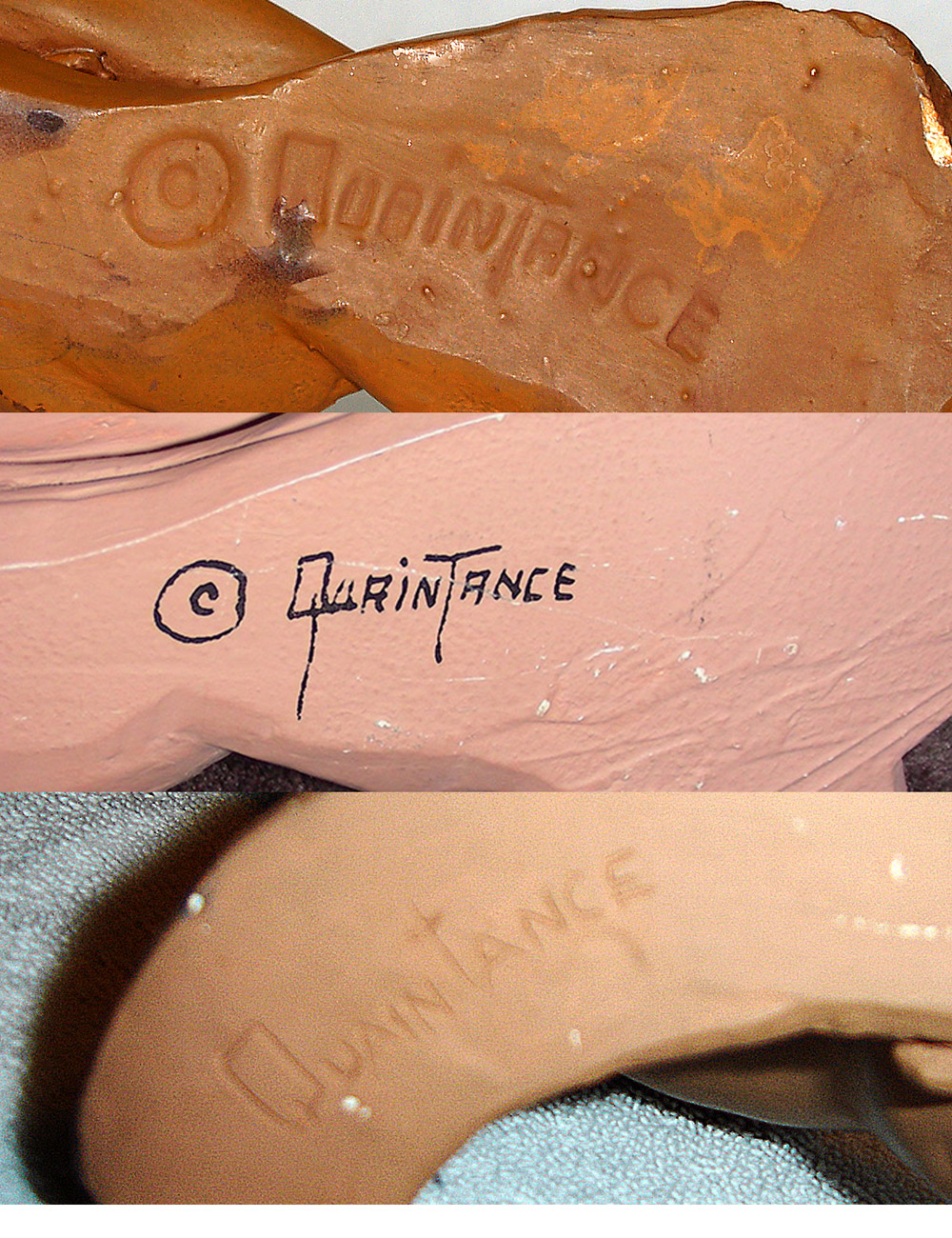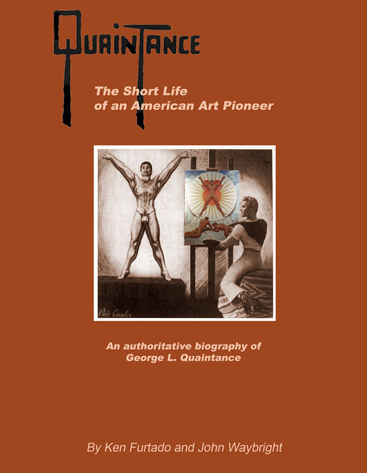 On Aug. 18, the Swann Auction Gallery of NYC held its annual auction of LGBTQ+ art, material culture and history. Of the 443 lots offered, four were Quaintance material.
On Aug. 18, the Swann Auction Gallery of NYC held its annual auction of LGBTQ+ art, material culture and history. Of the 443 lots offered, four were Quaintance material.
Anyone who thinks the USA is on the cusp of a recession should be encouraged by the robust bidding, which exceeded five-figure bids for about 18 of the items offered. If you add the 30% buyers fee for each lot, state sales tax based on the domicile of the high bidder, plus packing and shipping, successful bidders forked over a boatload of dollars that day.
 The first Quaintance item was an 8x10 duotone photograph of the artist, sporting a blond wig, standing beside his easel, on which rests the painting Havasu Creek. The photo is signed and inscribed. Quaintance was fond of this photo and he kept copies on hand to give to friends and buyers. I owned two such photos myself, both of which I sold on eBay in 2013. One, similarly signed and inscribed, sold for $131.50. The other, which was not, sold for $10. The latter photo is shown here. Hammer price of the photo at the Swann auction was $700.
The first Quaintance item was an 8x10 duotone photograph of the artist, sporting a blond wig, standing beside his easel, on which rests the painting Havasu Creek. The photo is signed and inscribed. Quaintance was fond of this photo and he kept copies on hand to give to friends and buyers. I owned two such photos myself, both of which I sold on eBay in 2013. One, similarly signed and inscribed, sold for $131.50. The other, which was not, sold for $10. The latter photo is shown here. Hammer price of the photo at the Swann auction was $700.
 The next Quaintance lot featured the all-blue Moonflower canvas that was the subject of my July 28 blog entry. The auction house called this painting Moonglow, and it failed to attract the minimum opening bid of $4400. The gallery subsequently notified me that the painting sold the following day for $4500.
The next Quaintance lot featured the all-blue Moonflower canvas that was the subject of my July 28 blog entry. The auction house called this painting Moonglow, and it failed to attract the minimum opening bid of $4400. The gallery subsequently notified me that the painting sold the following day for $4500.
 A signed copy of the Siesta lithograph was the next GQ item. Although the opening bid was set at $1100, the auctioneer opened the bidding in the $400 range and the winning bid was $900.
A signed copy of the Siesta lithograph was the next GQ item. Although the opening bid was set at $1100, the auctioneer opened the bidding in the $400 range and the winning bid was $900.
The final Quaintance lot was the Narcissus sculpture. Although these sculptures were produced and sold in simple terra cotta, a previous owner of this particular one coated it in white lacquer. The hideous result did not prevent a buyer from spending $2000 to acquire it.
 Quaintance employed three ways to sign his sculptures: his name scratched into the wet hydrostone (clay) with a stylus; a stamped imprint; or an actual signature in ink. This Narcissus is signed in ink. The Quaintance Studio continued to do business after George's death, and it's plausible that the imprinted signature and the stylus-inscribed signature were made by one of George's business partners when he was no longer there to add his actual signature.
Quaintance employed three ways to sign his sculptures: his name scratched into the wet hydrostone (clay) with a stylus; a stamped imprint; or an actual signature in ink. This Narcissus is signed in ink. The Quaintance Studio continued to do business after George's death, and it's plausible that the imprinted signature and the stylus-inscribed signature were made by one of George's business partners when he was no longer there to add his actual signature.
Everything on this website is free. If you enjoy reading these articles, please consider making a donation to help defray the costs of hosting and domain registration. The "Donate" button will get you started. Thank you.

